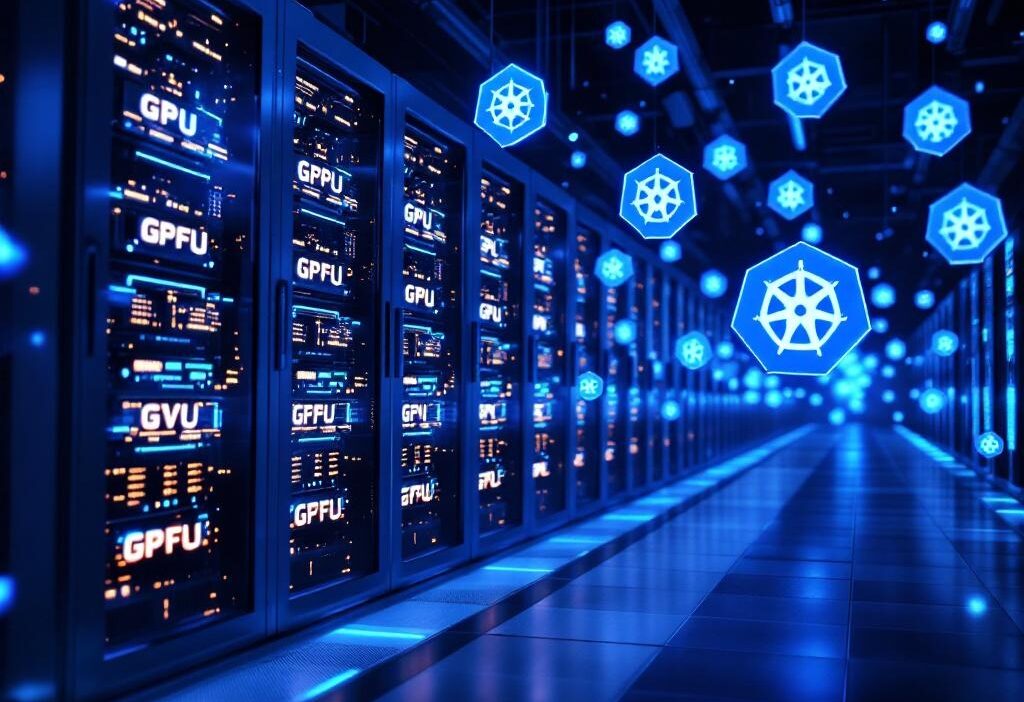The Side Effect Club: Kubernetes: The Backbone of Modern AI Infrastructure
Unraveling the AI Revolution: Infrastructure Orchestration & Kubernetes, November 2025 Edition
Estimated reading time: 5 minutes
- AI is changing not just applications, but also infrastructure management.
- Kubernetes is at the forefront of GPU workload management.
- Tools like RAPIDS enhance GPU computing efficiency.
- Orchestration strategies are crucial for handling AI workloads.
- Ignoring AI demands may lead to serious infrastructural consequences.
Table of contents:
- AI is the New Black – Again
- Technobabble Untangled: Orchestration Strategies and Infrastructure Optimizations
- Breakdown: GPU Resource Management for Dummies (and Smarties)
- Conclusion: Is AI Workload The Invisible Hand Guiding The Infrastructure Makeover?
- FAQ
AI is the New Black – Again
A tech trend as hot as AI makes waves not just in applications, but how we manage workloads and infrastructure. Take a quick knee deep dive into the latest Thoughtworks Technology Radar, and a pattern starts to emerge like a magic eye picture. AI pipelines are exploding like a kid’s birthday party balloon being hit by a watermelon, leaving platform engineering teams to juggle computational resources with the skill of a unicycling circus performer.
Technobabble Untangled: Orchestration Strategies and Infrastructure Optimizations
Think of orchestration strategies and infrastructure optimizations as the scientist’s magic wand. They’re not just dealing with Heisenberg’s uncertainty principle here, but a daily reality of managing distributed hyperscale GPU workloads. Kubernetes is leading the charge, prancing gaily through the labyrinths of machine learning needs like Theseus on an energy drink buzz.
On a serious note, Kubernetes incorporates new features that turn the complex world of infrastructure management into something that even your Granny could love. And let’s not forget its companions in the fray – n8n, LangChain, Pinecone, and more. Each has their own special skills – n8n with automated workflow, LangChain with atomic swap of languages, and Pinecone providing vector searches to AI-empower your applications. They’re like the Avengers squad of AI, each fulfilling a unique role in the larger battle.
Breakdown: GPU Resource Management for Dummies (and Smarties)
The GPU management is like managing a high-demand popular nightclub — not everyone can get in, but you still have to make sure the party keeps rocking. Tools like RAPIDS help in this by accelerating computation by leveraging GPUs, while Kubernetes ensures you get an exclusive VIP pass to resource allocation. The result is improved system efficiency, reduced costs, and a 24/7 rave of AI workloads that doesn’t blow out your walls.
Conclusion: Is AI Workload The Invisible Hand Guiding The Infrastructure Makeover?
If Adam Smith had foreseen the AI revolution, he may well have said AI workloads are the unseen hand guiding the evolution of infrastructure. Kubernetes et al. aren’t riding this wave for fun, but out of necessity. Your AI models are hungry — for power, for efficiency, and for optimization. Ignore them at your own peril.
Tweetables:
- “AI: Not just changing the apps we use, but the way the compute magic happens backstage too!”
- “AI workloads: no longer your cranky upstairs neighbor, but the residential committee deciding your infrastructural policies.”
- “Avoiding high-demand GPU management is as futile as avoiding Chandler’s sarcasm in Friends… Bazinga!”
The AI revolution isn’t waiting for anyone – so are you in? Let’s hear your thoughts in the comments below.
FAQ
What is Kubernetes used for?
Kubernetes is primarily used for managing containerized applications, automating deployment, scaling, and operations of application containers across clusters of hosts.
How does RAPIDS improve GPU computing?
RAPIDS leverages GPUs to speed up data science pipelines, allowing for faster computation and real-time data processing.
Why is resource orchestration important in AI?
Resource orchestration is crucial in AI because it enables efficient allocation and management of computational resources needed to support AI workloads, which can be complex and demanding.
What role does n8n play in AI workloads?
n8n is an automation tool that helps in creating workflows for AI applications, allowing for easier integration of various services and processes required in AI tasks.
How does Pinecone support AI applications?
Pinecone provides a managed vector database which allows for fast similarity searches in AI applications, enhancing the overall performance and capabilities.
References:
































































































































































































































































































